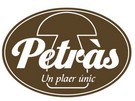The spring mushroom season is just starting. Scotch bonnets (Marasmius oreades), St. George's mushrooms (Calocybe gambosa), morels (Morchella), gurumelos (Amanita ponderosa), snow mushrooms (Hygrophorus marzuolus) or cep mushrooms (Boletus edulis) will once again be available in a campaign that started in mid-March and will last until the end of May/June.
 "The harvest of certain varieties, like the St. George's mushroom, a highly appreciated mushroom in the north of Spain, or that of snow mushrooms, which we have had available for several weeks, is going well. The first scotch bonnets have already been spotted and we are going to start imminently with the cep mushrooms. In fact, we are already receiving the first ones from South Africa," says Isaac Petràs, from Bolets Petràs.
"The harvest of certain varieties, like the St. George's mushroom, a highly appreciated mushroom in the north of Spain, or that of snow mushrooms, which we have had available for several weeks, is going well. The first scotch bonnets have already been spotted and we are going to start imminently with the cep mushrooms. In fact, we are already receiving the first ones from South Africa," says Isaac Petràs, from Bolets Petràs.
"As for the morels, it must be taken into account that wild mushroom growth goes hand in hand with rainfall and the right weather conditions. This year, we were facing a perfect spring that led us to expect a historic production of morels, but just a few days ago, we recorded 25 ºC at a 1,500 meter altitude here in Spain, and the heat has wiped out the production. The mycelium of the mushroom is very sensitive and with the right moisture and temperature it will bloom again, so the production will recover in the coming weeks."
"Regarding the demand, we see that it is increasing. We are in a country that highly appreciates its gastronomy, which also sustains the tourism sector, and fresh produce sales are on the rise. The same applies to the frozen and dried mushrooms which we devote to the export market," says Isaac. "Things are going great at our new freezing facilities and we are increasing the production with new blends."

However, this rising demand has been accompanied by changes in production trends. "The production of wild mushrooms can potentially be affected by climate change. The natural conditions are becoming increasingly irregular, and the behavior of species linked to a specific production period has become more volatile."
"We have already been noticing changes in the production for about 7-8 years. Historically, the autumn season started between the end of August and the beginning of September, and continued in the countries of Eastern Europe until the second/third week of December, but with climate change, the Cantharellus lutescens or golden chanterelle has remained available until the first week of March."
"Regarding the golden chanterelle, I remember that three years ago, we did not have it in Spain in September, and we were sourcing it from Sweden; that is, Scandinavia was having the weather conditions that we should have had. And we are seeing this more and more often. We are getting supply, but often from unexpected places."

"We are seeing this trend even with cultivated mushrooms, because although these are grown with temperature and moisture conditions under control, atmospheric changes can also affect them and slow down their production."
This doesn't mean that we'll stop having mushrooms, "because there can still be more mushrooms than ever in new areas. Due to climate change, we have a broader and more uneven playing field than ever before in the wild mushroom sector, and nature is always bound to determine where the game is to be played."
 For more information:
For more information:
Bolets Petràs
Calle Tintorers nave 35 Polígono Industrial Can Singla
08640 Olesa de Montserrat, Barcelona, Spain
Tel.: +34 93 778 76 78
[email protected]
https://www.boletspetras.com
